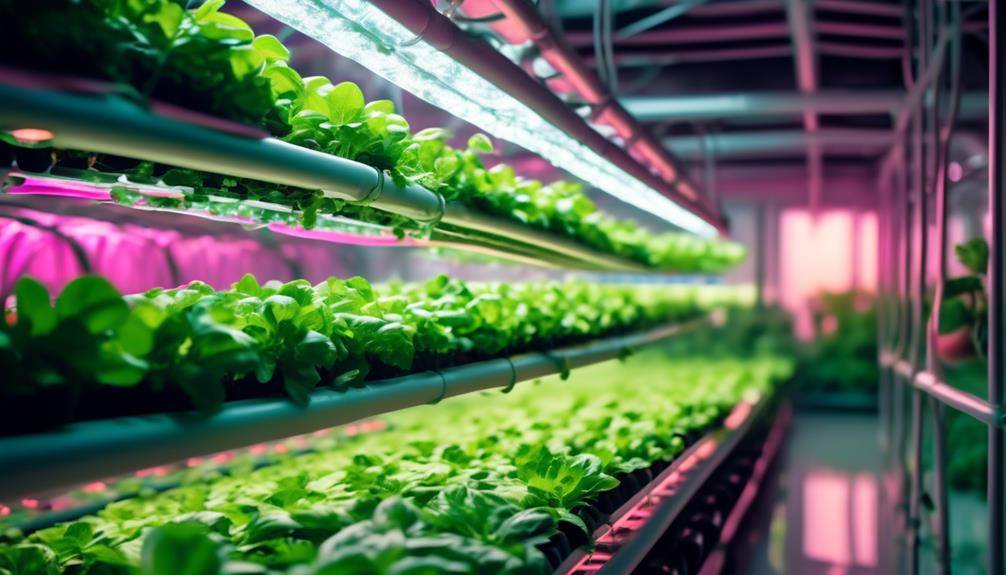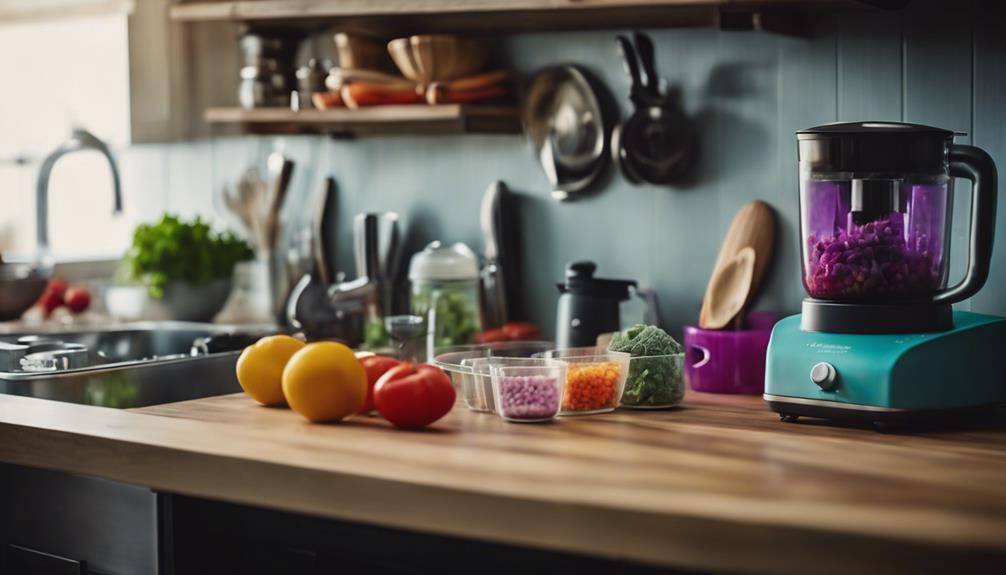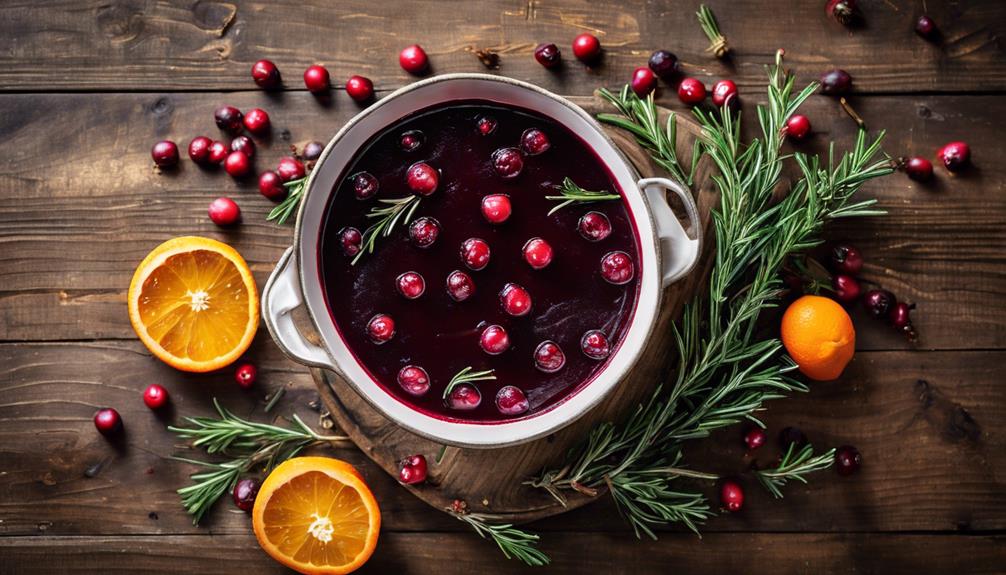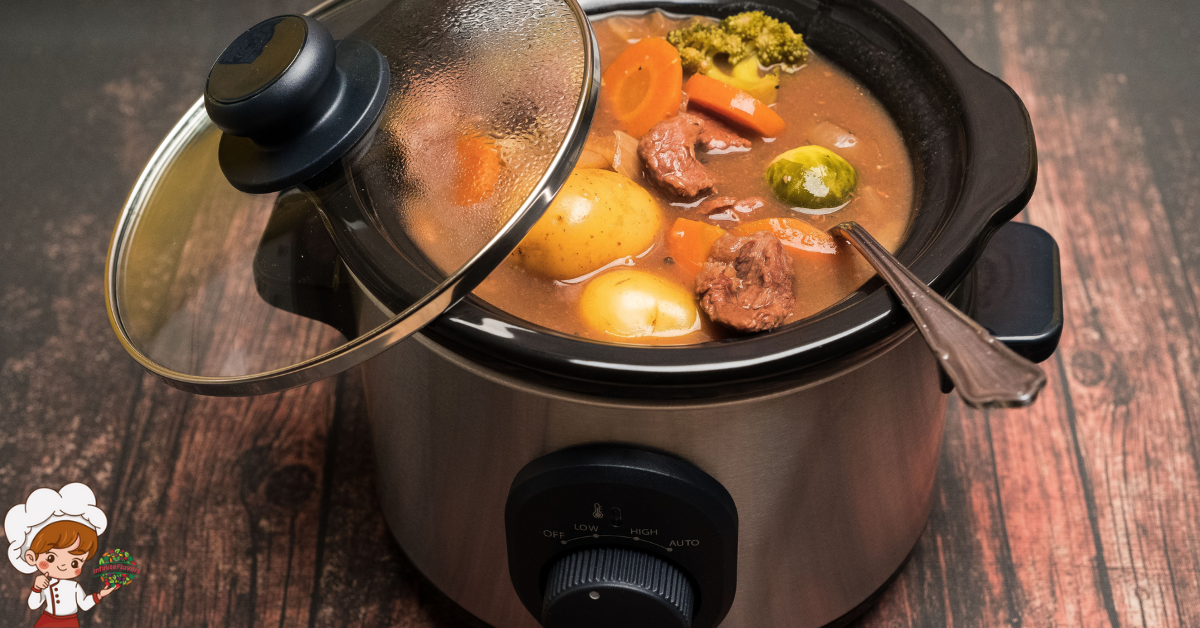Emerging Hydroponics Farming As A Food Trend

Are you looking for a new and sustainable way to grow your own food? Hydroponics farming may just be the answer you’ve been searching for. With its efficient use of resources and ability to grow crops in limited space, Hydroponics Farming As A Food Trend is quickly gaining popularity. But what exactly is hydroponics farming and how does it work? In this discussion, we will explore the advantages of hydroponics, different types of hydroponic systems, essential components for successful hydroponics farming, and much more. Get ready to discover a whole new world of farming possibilities that could revolutionize the way we think about food production.
What Is Hydroponics Farming?
Hydroponics farming is a method of growing plants without soil, using nutrient-rich water instead. This innovative technique has gained popularity due to its numerous advantages. One major advantage of hydroponics farming is the ability to grow plants in any location, regardless of the soil quality. This is especially beneficial in urban areas where arable land is limited. Additionally, hydroponics farming allows for greater control over the growing environment, resulting in higher crop yields and faster growth rates. By providing plants with the precise amount of nutrients they need, hydroponics farming minimizes the risk of nutrient deficiencies and diseases.
Another advantage of hydroponics farming is water conservation. Compared to traditional soil-based agriculture, hydroponics uses up to 90% less water. This is because the water in a hydroponic system is recirculated, reducing water waste. Furthermore, hydroponics farming eliminates the need for pesticides and herbicides, making it a more environmentally friendly option.
Despite its many advantages, hydroponics farming does have some disadvantages. One major disadvantage is the initial cost of setting up a hydroponic system. The equipment and infrastructure required can be expensive, making it less accessible to small-scale farmers. Additionally, hydroponics farming requires a certain level of expertise and knowledge to maintain the system properly. This can be a barrier for those who are new to this method of farming. Lastly, power outages or equipment malfunctions can be detrimental to hydroponics farming as plants rely heavily on a controlled environment.
Advantages of Hydroponics Farming
With its numerous advantages, hydroponics farming offers a range of benefits that make it a popular choice for growers. One of the main advantages of hydroponics farming is its ability to grow plants in a controlled environment. By providing the plants with the exact amount of nutrients, water, and light they need, growers can optimize plant growth and maximize yield. This precision also allows for faster growth rates compared to traditional soil-based farming methods.
Another advantage of hydroponics farming is its efficient use of resources. Since hydroponics systems recirculate water, they use up to 90% less water compared to traditional farming methods. This not only helps conserve water, which is a precious resource, but also reduces the risk of water pollution by minimizing the use of fertilizers and pesticides. Additionally, hydroponics farming requires less space than traditional farming, making it suitable for urban areas where land is limited.
Furthermore, hydroponics farming offers greater control over plant health and reduces the risk of pests and diseases. Without the use of soil, growers can eliminate soil-borne pests and diseases, reducing the need for chemical pesticides. The controlled environment of hydroponics systems also reduces the risk of external factors such as extreme weather conditions impacting plant growth.
Lastly, hydroponics farming allows for year-round cultivation, providing a consistent supply of fresh produce regardless of the season. This is particularly beneficial in regions with harsh climates or limited growing seasons. The ability to grow crops throughout the year not only ensures a steady food supply but also reduces the need for long-distance transportation, resulting in fresher and more sustainable produce.
Types of Hydroponics Systems
There are several different types of hydroponics systems that offer unique advantages and are suitable for various growing environments. Each system uses different growing mediums and methods to deliver hydroponic nutrients to the plants.
One of the most commonly used hydroponics systems is the Nutrient Film Technique (NFT). In this system, a thin film of nutrient-rich water flows continuously over the roots of the plants. The roots absorb the necessary nutrients and oxygen directly from the film, which helps in the efficient growth of the plants.
Another popular hydroponics system is the Deep Water Culture (DWC). In DWC, the plant’s roots are suspended in a nutrient-rich solution with the help of a floating platform or net pots. The roots are constantly submerged in the solution, allowing for easy nutrient absorption and maximum oxygenation.
The Ebb and Flow system, also known as the Flood and Drain system, works by periodically flooding the growing tray with a nutrient solution and then draining it back into a reservoir. This cyclic flooding and draining ensure that the roots receive ample nutrients and oxygen.
Aeroponics is a high-tech hydroponics system that uses mists or fine droplets of nutrient solution to deliver nutrients directly to the roots. This system promotes rapid plant growth and allows for better nutrient absorption.
Lastly, the Drip system is a simple and versatile hydroponics system. It involves dripping nutrient solution directly onto the base of each plant, providing a constant supply of nutrients.
Each hydroponics system has its own advantages and is suited for different types of plants and growing environments. By understanding the types of hydroponics systems and their specific requirements, you can choose the one that best fits your needs and maximize your success in hydroponic farming.
Essential Components for Hydroponics Farming
Now that you have an understanding of the different types of hydroponics systems available, let’s explore the essential components required for successful hydroponics farming. Two crucial components for hydroponics farming are vertical farming and automated systems.
Vertical farming is a technique that maximizes space by growing plants in vertically stacked layers. This method allows for higher crop yields in a smaller footprint, making it ideal for urban environments where land is limited. Vertical farming also provides better control over light, temperature, and nutrient distribution, resulting in healthier and more productive plants.
Automated systems play a vital role in hydroponics farming by providing precise control over environmental factors. These systems typically include sensors, controllers, and actuators that monitor and adjust variables such as pH levels, nutrient concentration, water temperature, and humidity. By automating these processes, growers can maintain optimal growing conditions without constant manual intervention. This not only saves time and effort but also ensures consistent crop quality and yield.
In addition to vertical farming and automated systems, other essential components for hydroponics farming include:
- Grow lights: Since hydroponics farming often takes place indoors or in controlled environments, artificial lighting is necessary to provide plants with the right amount and spectrum of light for photosynthesis.
- Nutrient solutions: Instead of soil, hydroponics relies on nutrient-rich water solutions to deliver essential elements to plants. These solutions need to be carefully balanced and regularly monitored to ensure plants receive the right nutrients in the correct proportions.
- Growing media: Hydroponics systems use various types of growing media, such as perlite, rockwool, or coconut coir, to support plant roots and hold moisture.
Choosing the Right Plants for Hydroponics
When it comes to choosing the right plants for hydroponics, there are a few tips to keep in mind. First, consider the size and growth habit of the plant to ensure it will fit within your hydroponic system. Second, look for plants that have a high yield and are well-suited for indoor growing. Finally, prioritize crops that have a shorter growing cycle, allowing you to harvest more frequently.
Plant Selection Tips
To select the right plants for hydroponics, consider their growth requirements and compatibility with the hydroponic system you are using. Hydroponic plant selection is crucial for successful hydroponic farming. Some plants thrive in this soilless environment, while others may struggle. The best plants for hydroponics are those that have shallow root systems, tolerate high humidity, and yield good results with nutrient-rich water.
Leafy greens like lettuce, spinach, and kale are popular choices for hydroponics due to their fast growth and high nutrient content. Herbs like basil, parsley, and mint also do well in hydroponic systems. Tomatoes, cucumbers, and peppers are suitable for larger setups with more advanced hydroponic systems. Remember to research the specific growth requirements of each plant to ensure optimal growth and yield.
Ideal Hydroponic Crops
Consider the specific crops that thrive in hydroponic systems as you explore the ideal plants for your hydroponic farming endeavors. When it comes to hydroponic crop selection, there are several options that work exceptionally well in this environment. Here are some of the best hydroponic crops to consider:
- Leafy greens: Lettuce, spinach, and kale are all excellent choices for hydroponic farming. They grow quickly and have high yields.
- Herbs: Basil, mint, and parsley are popular herbs that can be grown hydroponically. They require minimal space and can be harvested frequently.
- Tomatoes: This versatile fruit thrives in hydroponic systems and can be grown year-round. They are known for their delicious flavor and vibrant color.
- Strawberries: Hydroponic strawberries offer a sweet, juicy taste and can be grown vertically to maximize space.
Nutrient Solutions for Hydroponics
When it comes to hydroponics, understanding the nutrient requirements is crucial. Nutrient solutions are the key to providing plants with the necessary elements for growth. There are different types of nutrient solutions available, each with its own unique composition. It is important to ensure that the nutrient solution is balanced to promote healthy and vigorous plant growth.
Nutrient Requirements for Hydroponics
Hydroponics farming requires carefully formulated nutrient solutions to provide plants with the essential elements they need to thrive. Nutrient deficiencies can hinder plant growth and development, leading to reduced yields and poor crop quality. To ensure optimal nutrient uptake efficiency, hydroponic systems must provide plants with the right balance of nutrients. Here are four key factors to consider when formulating nutrient solutions:
- Macronutrients: Plants need macronutrients such as nitrogen, phosphorus, and potassium in large quantities for healthy growth.
- Micronutrients: These trace elements, including iron, manganese, and zinc, are essential for various metabolic functions in plants.
- pH balance: Maintaining the correct pH level is vital for nutrient availability and uptake.
- Nutrient concentration: The concentration of nutrients in the solution must be carefully monitored to avoid nutrient imbalances or toxicity.
Types of Nutrient Solutions
To ensure optimal nutrient uptake efficiency, it is crucial to select the right type of nutrient solution for your hydroponic system. There are various types of nutrient solutions available for vertical farming and organic hydroponics. One common type is a complete nutrient solution, which contains all the necessary macro and micronutrients in the correct ratios. This type of solution is convenient as it provides all the essential elements for plant growth.
Another option is a custom nutrient solution, where you can tailor the nutrient composition based on the specific needs of your crops. This allows for more precise control over nutrient levels and can be beneficial for specific plant varieties or stages of growth. Additionally, organic nutrient solutions are available for those practicing organic hydroponics, ensuring that the crops are grown without the use of synthetic chemicals or additives. Choosing the right type of nutrient solution is essential for maintaining healthy and productive plants in your hydroponic system.
Importance of Balanced Nutrients
Achieving a balanced nutrient solution is crucial for the success of your hydroponic system and the overall health and productivity of your plants. To ensure balanced nutrient levels and optimal growth, consider the following:
- Nutrient ratios: Maintaining the right balance of essential nutrients like nitrogen, phosphorus, and potassium is vital for plant growth and development. Each nutrient plays a specific role in the plant’s metabolic processes, so it’s important to provide them in the correct proportions.
- Macronutrients and micronutrients: Plants need a combination of macronutrients, such as nitrogen, phosphorus, and potassium, as well as essential micronutrients like iron, zinc, and manganese. These elements are required in smaller quantities but are equally important for plant health.
- pH levels: Monitoring and adjusting the pH of your nutrient solution is crucial because it affects nutrient absorption. Most plants thrive in a slightly acidic to neutral pH range (around 5.5 to 6.5).
- Regular testing: Regularly testing your nutrient solution will help you identify any imbalances or deficiencies and allow you to make necessary adjustments to maintain optimal nutrient levels.
Managing Ph Levels in Hydroponics
Maintaining the optimal pH levels is crucial for successful hydroponics farming. pH management techniques are used to ensure that the nutrient solution remains within the desired range of acidity or alkalinity, which is typically between pH 5.5 and 6.5 for most hydroponic crops. There are several pH adjustment methods available to hydroponic growers.
One common method is the use of pH buffers or adjusters, such as pH up and pH down solutions. These solutions are added to the nutrient solution in small increments to raise or lower the pH, respectively. pH up solutions usually contain alkaline substances like potassium hydroxide, while pH down solutions contain acidic substances like phosphoric acid.
Another technique is the use of acid or alkaline additives. For example, citric acid can be used to lower pH, while sodium bicarbonate can be used to raise pH. These additives are added to the nutrient solution in small amounts and their effects on pH levels are carefully monitored.
Additionally, some hydroponic systems incorporate automated pH controllers. These controllers continuously monitor the pH levels and automatically adjust them by adding pH up or pH down solutions as needed. This helps to maintain a stable pH within the desired range.
Regular monitoring of pH levels is essential in hydroponics farming. pH test kits or pH meters are commonly used to measure the pH of the nutrient solution. By regularly checking and adjusting pH levels, growers can ensure that their plants are receiving the optimal nutrient uptake and avoid nutrient imbalances or deficiencies that can hinder plant growth.
Lighting Requirements for Hydroponics Plants
To ensure the optimal growth of your hydroponics plants, it is important to understand their lighting requirements. Light intensity plays a crucial role in photosynthesis, so you need to provide the right amount of light for your plants to thrive. Additionally, different plants have specific spectrum requirements, meaning they need certain colors of light to support their growth. By understanding and meeting these lighting requirements, you can ensure healthy and productive hydroponics farming.
Optimal Light Intensity
Proper lighting is crucial for the successful growth of hydroponics plants. To ensure optimal light intensity, consider the following factors:
- Optimal light sources: LED lights are the most commonly used in hydroponics farming due to their energy efficiency and ability to provide the full spectrum of light needed for plant growth.
- Light duration: Hydroponics plants typically require 12-16 hours of light per day for optimal growth. This mimics the natural daylight cycle and allows plants to undergo photosynthesis and produce energy.
- Timing: Consistency in light timing is important for plants to establish a healthy growth pattern. Maintaining a regular light schedule will help plants thrive and avoid stress.
Light Spectrum Requirements
LED lights are commonly used in hydroponics farming due to their energy efficiency and ability to provide the full spectrum of light needed for optimal growth, including the specific light spectrum requirements for different hydroponics plants. Light spectrum optimization plays a crucial role in the growth and development of hydroponics plants.
The impact of light quality on plant growth is significant, as different wavelengths of light affect various physiological processes. For instance, blue light is essential for promoting vegetative growth, while red light stimulates flowering and fruiting. By manipulating the light spectrum, hydroponics farmers can control and enhance plant growth, ensuring healthier and more productive crops. LED lights allow for precise control of light wavelengths, enabling farmers to tailor the lighting conditions to meet the specific needs of different hydroponics plants, resulting in higher yields and better quality produce.
Water and Temperature Control in Hydroponics
Maintaining precise water and temperature control is crucial in hydroponics farming for optimal plant growth and nutrient absorption. In this innovative farming method, water and nutrient management play a vital role in providing the necessary elements for plants to thrive. With the help of automation and technology advancements, hydroponic systems can now achieve precise control over water and temperature, ensuring plants receive the ideal conditions for growth.
Here are four key factors to consider when it comes to water and temperature control in hydroponics:
- Nutrient Solution: The nutrient solution, which replaces traditional soil, must be carefully monitored and adjusted to provide plants with the right balance of essential nutrients. By regularly testing the solution’s pH level and nutrient concentration, you can ensure that your plants are receiving the optimal nutrition they need for healthy growth.
- Water Quality: Water quality is of utmost importance in hydroponic systems. Ensuring that the water is free from contaminants, such as heavy metals and pathogens, is crucial for the well-being of your plants. Regular water testing and filtration can help maintain the highest quality water for your hydroponic setup.
- Temperature Control: Controlling the temperature in a hydroponic system is essential for maintaining optimal plant growth. Different plants have specific temperature requirements, and maintaining the ideal temperature range can promote faster growth and higher yields. Using thermostats and heaters or coolers, you can fine-tune the temperature to meet the specific needs of your crops.
- Humidity Regulation: Proper humidity levels are crucial in a hydroponic environment. High humidity can lead to the growth of mold and other pathogens, while low humidity can cause plants to dry out. By using humidifiers or dehumidifiers, you can maintain the ideal humidity range for your plants, ensuring their overall health and productivity.
Pest and Disease Management in Hydroponics
Pests and diseases pose significant challenges in hydroponics farming, requiring proactive management strategies to ensure the health and productivity of plants. Integrated pest management (IPM) is a widely adopted approach in hydroponics for effectively controlling pests and diseases while minimizing the use of chemical pesticides. IPM combines cultural, biological, and chemical methods to create a balanced and sustainable system.
Hydroponics technology advancements have played a crucial role in enhancing pest and disease management. One such advancement is the use of automated monitoring systems. These systems continuously monitor the growing environment, detecting any signs of pests or diseases early on. This allows for immediate intervention and prevents the spread of infestations.
Additionally, innovations in hydroponic systems have led to the development of closed-loop systems. These systems, such as deep water culture and nutrient film technique, minimize the risk of pests and diseases by eliminating the need for soil. Without soil, the potential for soil-borne pests and diseases is greatly reduced.
Biological control is another key aspect of pest and disease management in hydroponics. Beneficial insects, such as ladybugs and predatory mites, are introduced into the growing system to control pests naturally. These beneficial insects prey on common pests like aphids and spider mites, reducing the need for chemical pesticides.
Furthermore, hydroponics technology advancements have allowed for the integration of disease-resistant varieties. By selecting and cultivating disease-resistant plants, the risk of diseases is significantly reduced, leading to healthier and more productive crops.
Harvesting and Maintenance in Hydroponics
In order to ensure the continued success of your hydroponics farm, it is important to understand the proper techniques for harvesting and maintaining your crops. Here are some key tips to help you maximize your yields and keep your plants healthy and thriving:
- Harvesting Techniques: Harvesting in hydroponics can be done as soon as the plants reach their desired size or maturity. To avoid damaging the plant, use sharp tools such as scissors or pruning shears to cut the stems cleanly. Make sure to harvest during the cooler parts of the day to minimize stress on the plants. Remember to remove any dead or diseased leaves to prevent the spread of pests and diseases.
- Pest Control Methods: In hydroponics, pests can still be a problem. Implementing preventive measures such as regularly inspecting your plants for signs of pests, using sticky traps, and practicing good hygiene can help deter pests. If an infestation occurs, consider using biological controls like beneficial insects or natural pesticides. Additionally, maintaining a clean and sterile environment by regularly disinfecting your equipment and properly disposing of any plant debris can help prevent pest outbreaks.
- Nutrient Monitoring: Regularly monitor the nutrient levels in your hydroponic system to ensure that your crops are receiving the necessary nutrients for optimal growth. Use a pH meter to measure the acidity or alkalinity of your nutrient solution and adjust it as needed. Also, keep an eye on the electrical conductivity (EC) of the solution to ensure that it is within the appropriate range.
- System Maintenance: Proper maintenance of your hydroponic system is crucial for its longevity and efficiency. Clean and sanitize your equipment regularly to prevent the buildup of algae and bacteria. Check for any leaks or clogs in the system and address them promptly. Regularly monitor and adjust the water levels and ensure that the pumps and timers are functioning properly.
Hydroponics Vs. Traditional Soil Farming
When comparing hydroponics to traditional soil farming, there are several key differences to consider. One major difference is the way in which crops are grown. In traditional soil farming, plants are grown in the ground, with their roots absorbing nutrients from the soil. In hydroponics, on the other hand, plants are grown in a nutrient-rich water solution, without the use of soil.
One important factor to consider when comparing hydroponics and traditional soil farming is the yields that can be achieved. Hydroponic systems have the potential to produce higher yields compared to traditional soil farming. This is because in hydroponics, plants have access to a constant supply of nutrients and water, which promotes faster and healthier growth. Additionally, hydroponic systems can be set up vertically, allowing for more plants to be grown in a smaller space, further increasing yields.
Another key difference between hydroponics and traditional soil farming is the environmental impact. Traditional soil farming often requires large amounts of land, as well as the use of pesticides and fertilizers that can harm the environment. In contrast, hydroponics uses less land and eliminates the need for harmful chemicals. Additionally, hydroponic systems can be set up indoors, using artificial lighting, which reduces the reliance on natural resources like sunlight.
Hydroponics in Urban Farming and Community Gardens
As we shift our focus to hydroponics in urban farming and community gardens, it’s important to explore how this innovative farming method is revolutionizing food production in densely populated areas.
- Urban hydroponics brings fresh produce to food deserts, providing access to nutritious food in areas with limited grocery stores or farmers markets. This improves food security and reduces the risk of malnutrition in urban communities.
- Community garden hydroponics creates opportunities for social interaction and education. People can come together, learn about sustainable farming practices, and share the joy of growing their own food, fostering a sense of community and empowerment.
- Urban hydroponics minimizes the need for transportation and reduces carbon emissions associated with long-distance food supply chains. This contributes to environmental sustainability and helps mitigate the impact of climate change.
- Community garden hydroponics promotes healthy lifestyles and encourages physical activity. It allows individuals to engage in gardening activities, which can be a form of exercise and stress relief.
Future Trends in Hydroponics Farming
Hydroponics farming is continuously evolving, with future trends focusing on technological advancements and sustainable practices. As technology continues to advance, hydroponic systems are expected to become more efficient and sophisticated. Future technology advancements will likely include the use of automation and artificial intelligence to monitor and control various aspects of the hydroponic system, such as nutrient levels, temperature, and lighting. This will not only make the farming process more streamlined but also reduce the need for manual labor.
Another future trend in hydroponics farming is the adoption of sustainable practices. As the world becomes more conscious of environmental issues, sustainable farming methods are gaining popularity. In hydroponics, this means reducing the use of non-renewable resources such as water and energy. To achieve this, future hydroponic systems may incorporate technologies like rainwater harvesting and solar panels to minimize reliance on external resources.
Additionally, there is a growing interest in incorporating circular economy principles into hydroponics farming. This involves maximizing resource efficiency by reusing and recycling materials within the system. For example, nutrient solutions can be recycled and wastewater can be treated and reused, minimizing waste and reducing the environmental impact of hydroponic farming.
Furthermore, future trends in hydroponics farming may also include the development of more sustainable growing mediums. Traditional hydroponic systems use materials like rockwool or perlite, which are not environmentally friendly. However, researchers are exploring alternative options such as coconut coir or recycled materials that are both sustainable and effective for plant growth.
Hydroponics Farming As A Food Trend; Frequently Asked Questions
Can Hydroponics Farming Be Done in Small Spaces Like Urban Areas or Community Gardens?
Yes, hydroponics farming is ideal for small spaces like urban areas or community gardens. It allows for efficient use of space, eliminates the need for soil, and can yield higher crop yields.
How Does Hydroponics Farming Compare to Traditional Soil Farming in Terms of Crop Yield and Quality?
Hydroponics farming, compared to traditional soil farming, has higher crop yields and better quality. It uses less water and has a lower carbon footprint. However, setting up and maintaining a hydroponics farm can be more expensive.
What Are the Future Trends or Advancements Expected in Hydroponics Farming?
In the future, hydroponics farming is expected to see exciting innovations and technological advancements. These advancements may include improvements in automation, artificial intelligence, and the use of sustainable energy sources.
How Do Hydroponics Farmers Manage Pests and Diseases Without the Use of Soil?
To manage pests and diseases without soil in hydroponics farming, you can implement various techniques. For example, you can use beneficial insects, such as ladybugs, or employ biological controls like nematodes. Additionally, maintaining proper nutrient levels and practicing good hygiene can help prevent diseases.
Are There Any Specific Plants That Are Not Suitable for Hydroponics Farming?
Some plants may have limitations when it comes to hydroponics farming. However, there are alternative farming techniques, such as traditional soil-based farming, that can be used for these specific plants.
Conclusion
In conclusion, hydroponics farming is a rapidly growing food trend that offers numerous advantages over traditional soil farming. With various types of hydroponics systems and essential components, it allows for efficient and controlled plant growth. It is also a suitable option for urban farming and community gardens. As the future of farming, hydroponics holds great potential for meeting the increasing demand for food in a sustainable and resource-efficient manner.








